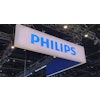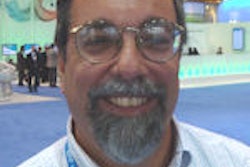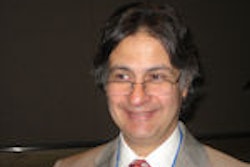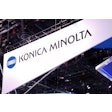CHICAGO - There may be a better way to judge the quality of a lossy-compressed JPEG 2000 image than its traditional compression ratio, according to research presented Thursday at the 2009 RSNA meeting in Chicago.
A Seoul National University Bundang Hospital in Korea team found that compression ratio -- the de facto standard index of compression level -- underperformed both a mathematical metric and perceptual metric in correlating with the degree of compression artifacts in body CT images. They also concluded that the perceptual quality metric was the best overall method.
"Our results suggest that it is necessary to revisit the current standard that uses the compression ratio as the index of compression level, as image fidelity is more important than calculating the data reduction," said presenter Dr. Kyoung Ho Lee.
While lossy compression has been proposed as means to help cope with the CT data explosion, it's important to accurately control the degree of compression artifacts in order to achieve optimal compression, according to Lee. Traditionally, the compression level or image fidelity has been commonly expressed using its compression ratio.
However, a single compression ratio can't be used as a universally acceptable compression threshold for all image types, as compression artifacts inherently depend on image content and compression algorithms, Lee said.
To see if there was a better option, the researchers compared compression ratio and two alternatives -- a mathematical metric (peak signal-to-noise ratio) and a perceptual quality metric (high dynamic range visual difference predictor) -- in 250 body CT scans obtained with five different scan protocols. The images were compressed using five compression ratios: reversible, 6:1, 8:1, 10:1, and 15:1.
After viewing alternate displays of the original and compressed images, five radiologists independently determined if the two images were distinguishable or indistinguishable. If three or more radiologists determined the images were distinguishable, then the image pair was regarded as distinguishable, Lee said.
The pooled radiologists' responses served as the reference standard in the study and were used to perform receiver operator characteristics (ROC) analysis to compare the three indices.
For each image pair, peak signal to noise ratio (PSNR) was determined. In addition, perceptual image difference was estimated using high dynamic range visual difference predictor (HDR-VDP), a computational model that simulates the human visual system. HDR-VDP considers viewing conditions, such as display function, display size, and viewing distance, Lee said.
"HDR-VDP predicts the probability that a human observer would detect the image difference at each pixel location," he said.
The researchers noted that the number of distinguishable image pairs tended to differ significantly among the five scan protocols at 6:1 -10:1 compression levels. They also found that the correlation coefficients between the compression ratio, PSNR, and HDR-VDP and the number of radiologists who responded as distinguishable were 0.72, 0.77, and 0.85, respectively.
The areas under the ROC curves for the compression ratio, PSNR, and HDR-VDP were 0.87, 0.93, and 0.97, respectively. The differences were statistically significant when comparing compression ratio and PSNR (p = 0.04), compression ratio and HDR-VDP (p < 0.001), and PSNR and HDR-VDP (p < 0.001).
"The compression ratio is less suitable than the PSNR or HDR-VDP as an index in controlling the compression level for JEPG2000-compressed body CT images," Lee said. "HDR-VDP is more promising than the PSNR as such an index."
By Erik L. Ridley
AuntMinnie.com staff writer
December 3, 2009
Related Reading
Perceptual differences seen with 3D JPEG 2000 compression, August 19, 2009
German conference yields data compression recommendations, March 30, 2009
JPEG 2000 compression artifacts more prevalent in thin-section CT images, August 13, 2008
Lossy compression perceptible at even low levels, May 15, 2008
Lossy compression performs well in abdominal CT images, January 13, 2008
Copyright © 2009 AuntMinnie.com




















